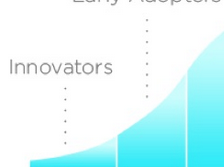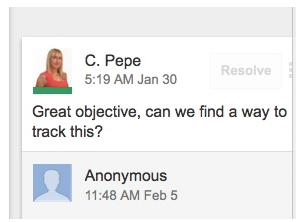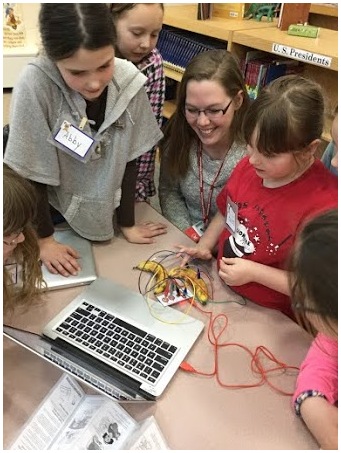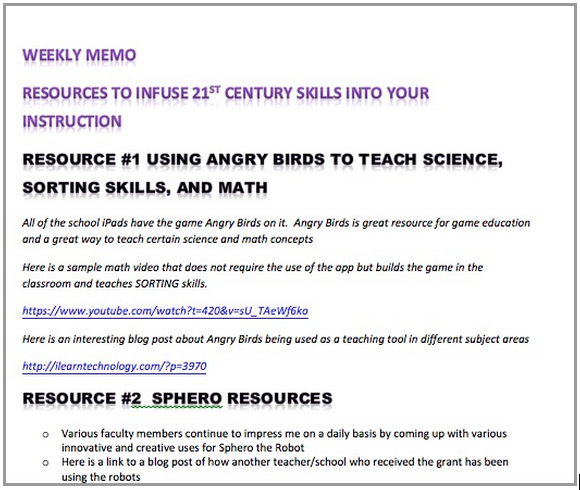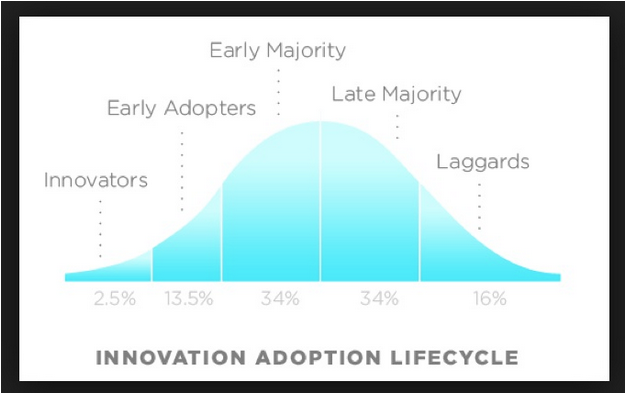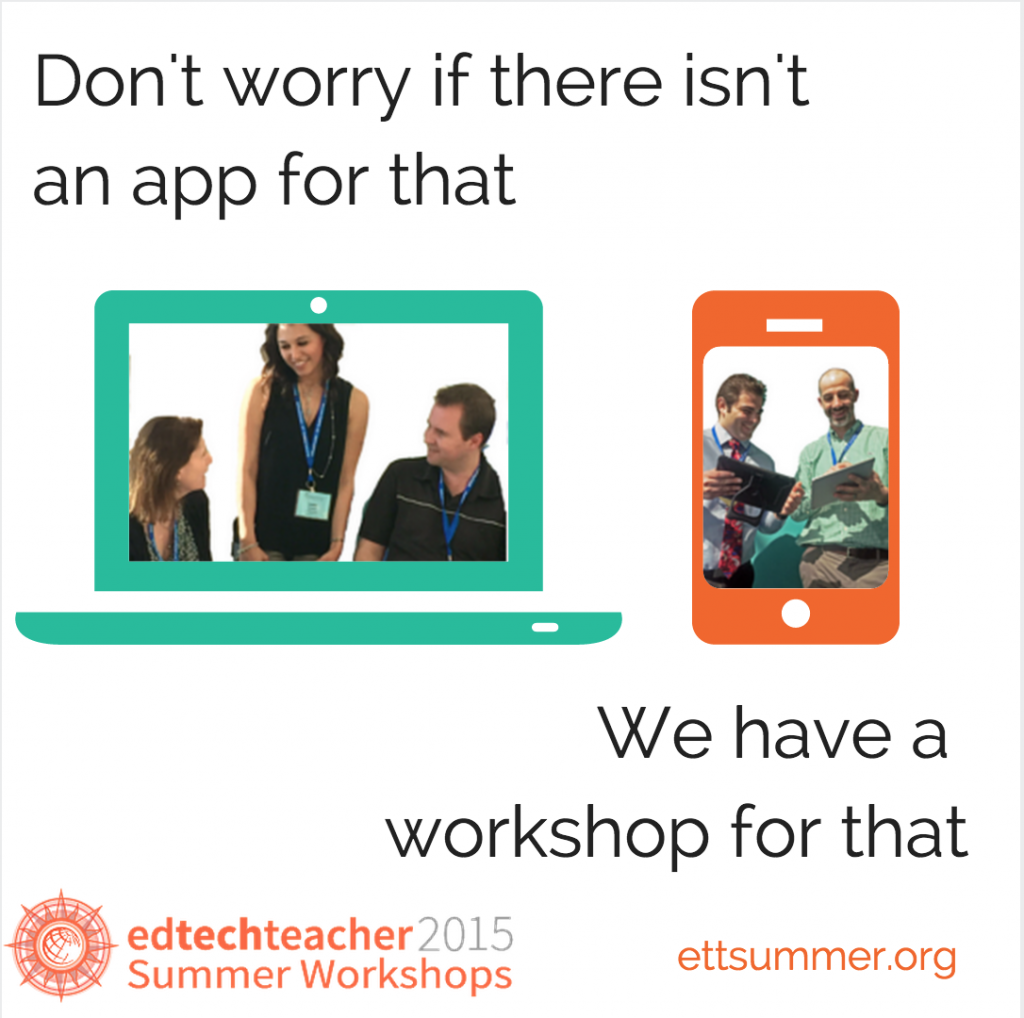This guest post from Courtney Pepe (@iPadQueen2012) first appeared on Daily Genius.
It is that time of year when aspiring school administrator candidates are polishing their resumes and getting job interviews to make the jump from teacher to administrator. Technology is always a topic that comes up on an administrative panel: what do you do with ed tech during the first 30 days on the job, on the first 60 days on the job, on the first 90 days on the job? Since I have recently moved into my first administrative role, I wanted to share some technology implementation tips that will be helpful to new administrators who wish to effectuate change within their organizations.
Tip #1 - Digital Feedback on Lesson Plans in Google Drive
Many states require that schools keep records of their teacher lesson plans. A common complaint from teachers is that they submit lesson plans year after year and never receive any feedback from building level administration. The comments feature in Google Drive is a great way to give feedback on these teacher lesson plans. Reviewing the lesson plans is really a good way to get to know the instructional needs of your staff, and the fact that the comment feature in Google Drive allows the teachers to immediately respond to the feedback is really useful. Also, by having your teachers submit their lesson plans electronically, you are modeling digital workflow for your faculty.
The comment feature in Google Drive makes lesson plan feedback interactive.
Tip #2 - Create Maker Spaces
As a first year administrator, and an Assistant Principal at two different primary schools, Ross Cooper (@RossCoops31) helped to establish a makerspace at one of his schools. As part of the makerspace, they obtained a handful of iPads, and Ross took the lead in loading the devices with apps. When approaching this challenge, this first year administrator wanted a mix of creation apps and those that were more makerspace specific. Some of the creation apps now include Book Creator, Canva, and iMovie, while some of the makerspace apps include Daisy the Dinosaur, Scratch Jr., and Kodable.
“So far, it has been interesting to see how the students embrace the technology and are able to literally teach themselves how to use the devices and the apps without much teacher/administrator involvement. This learning process is a shift in mindset, as no longer does the teacher have to be the holder of all information, while in a makerspace or while in a classroom.” - Ross Cooper
As an administrator you set up classrooms that give students the opportunity to engage in higher level thinking as well the creation of their own content. The more students are engaged in the learning, the less disciplinary issues an administrator will have to deal with throughout the school day.
Image Credit: Ross Cooper
Tip #3 - Weekly Electronic Letters to the Faculty
It is important to recognize that educators are busy people. However, this does not mean that they are not hungry for new information related to best practices on the implementation of technology in the classroom. Every Monday, I send out a weekly memo via email called Resources to Infuse 21st Century Skills into Your Instruction. My advice to other administrators would be to limit information in your weekly tech memo to 4 or 5 items. If you throw too much new information at the teachers at once, it could be overwhelming.
Here is an example of the two resources that I shared in a recent memo:
- Using Angry Birds to teach science, sorting skills, and math with links to YouTube videos that modeled the instructional technique for them
- Sphero Challenges that were provided to me by other teachers who had their students use their coding skills to make Sphero the robot to do the hokey pokey as well as navigate an obstacle course.
A snapshot of one of my memos
My advice to new administrators is not to think that every teacher will embrace every item in the tech memo overnight. These ideas do take time, so make sure to give them time to marinate. Then after the first 30, 60, and 90 days you will see evidence of your suggestions in the classroom.
Tip #4 - Leverage GAFE Google Apps for Education
The Edison School district is in the midst of a digital conversation, and they are going 1:1 with Chromebooks in grades 3-8. Steve Figurell (@SteveFigurelli) - 1st Year Supervisor of Elementary Education - feels that “Technology in the hands of students creates unprecedented access: access to both information and one another.” He also stresses the importance of Google Apps for Education (GAFE). The package of productivity applications that Google offers for free to schools helps to increase the culture of collaboration in the classroom through the use of Gmail, Calendar, Drive, Docs and Sites.
As a first year administrator, Mr. Figurelli has seen the power of Chromebooks first hand. “Embracing Chromebooks and GAFE has enabled us, as a district, to truly embody the mantra of we’re smarter together - all in an unrelenting effort to better serve our kids.”
Dr. Scott Rocco, Superintendent of Schools in Spotswood, NJ, is also supporting the implementation of GAFE this year and further argues that “Google Apps for Education provides educators with the resources and collaboration tools necessary to be effective and efficient.”
Tip #5 – Differentiate the Coaching You Provide
When you land your first administrative job, you may be in a school with iPads, Chromebooks, or BYOD. No matter what technology infrastructure exists in your new job, it is important to remember that not all teachers learn the same way. Just as you would differentiate for students with varying needs in the classroom, it is important to differentiate the instructional coaching and feedback you provide for your staff.
Image Credit: Wikipedia - Roger’s Bell Curve
I like to use this graphic when I think of teacher coaching. It is always important to find new ways to inspire your innovative teachers as well as support those who are not quite yet on board. I have shared augmented reality resources like Blippar with my innovators while some teachers on other parts of the tech Bell Curve have benefitted from more concrete tasks such as how to accept a calendar invite in Microsoft Outlook. Any accomplishment that any teacher on any portion of this bell curve makes with technology is significant because it supports a change mindset and a willingness to try to new things.
Courtney Pepe and Ross Cooper will be presenting on Effective Leadership in the Digital Age at the ISTE Conference in Pennsylvania in June. There are also great learning opportunities this summer with EdTechTeacher - ettsummer.org.

